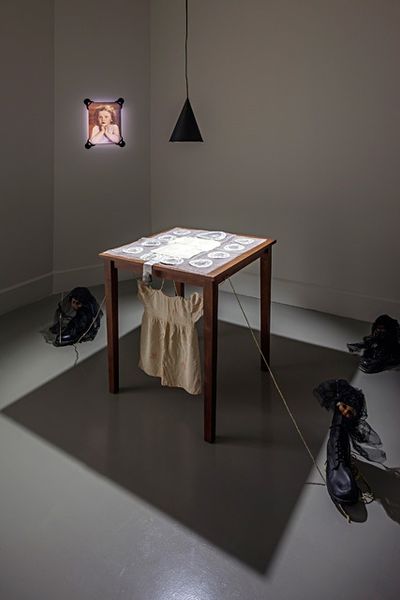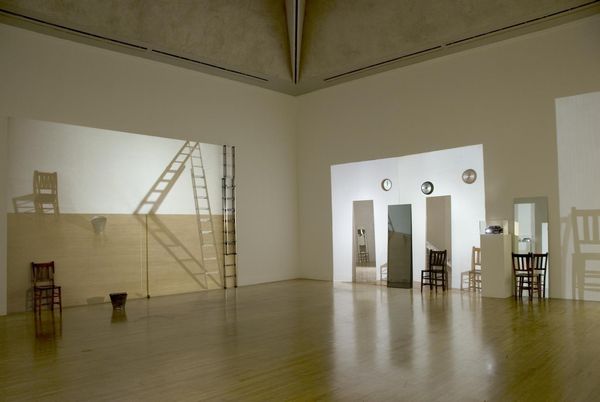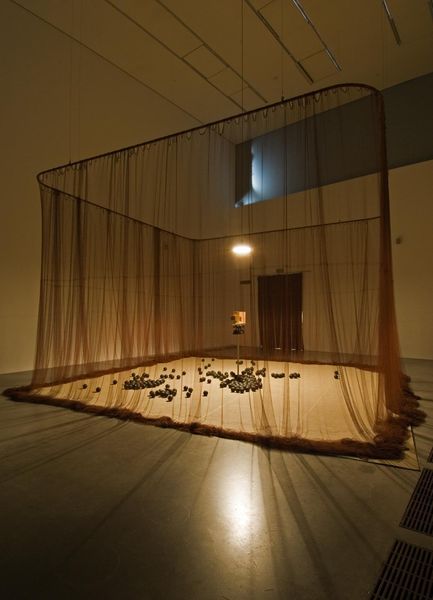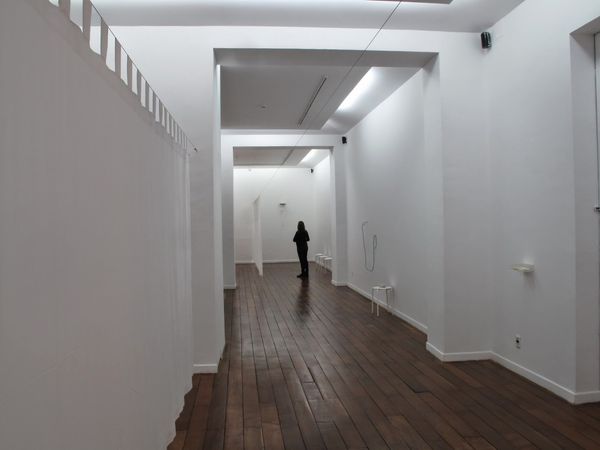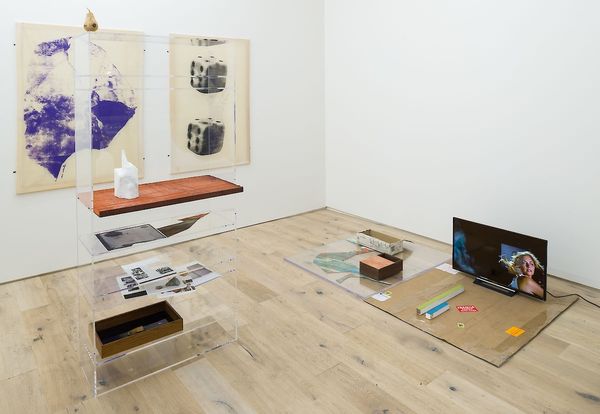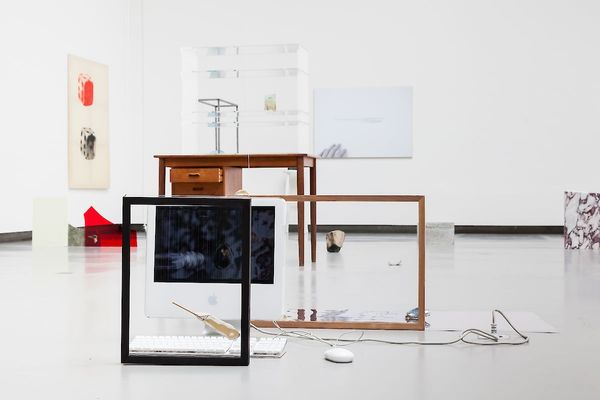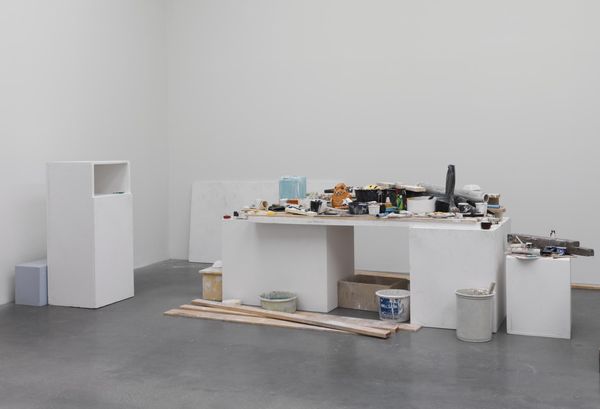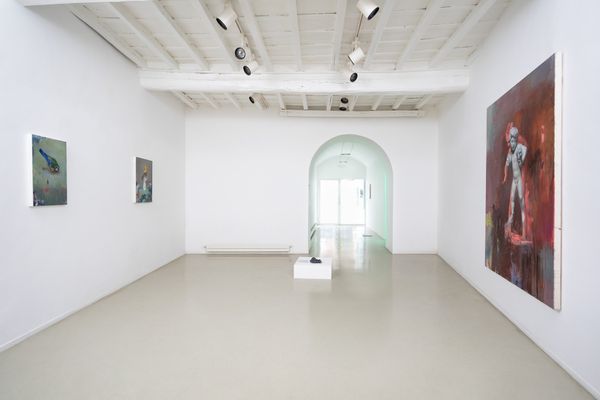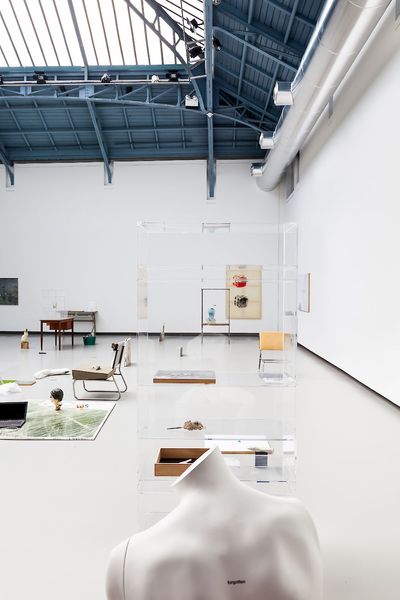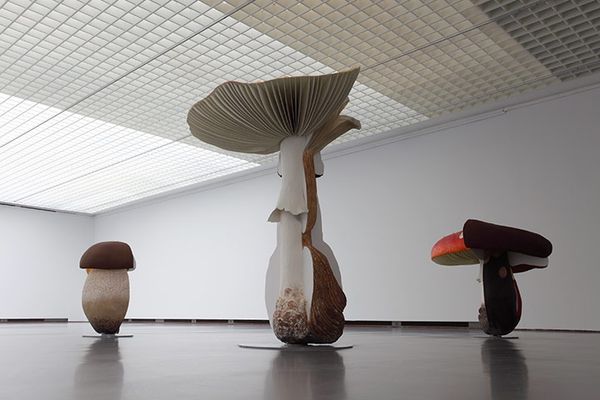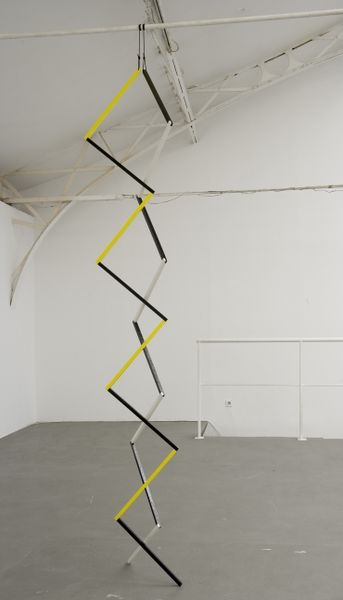
Dimensions: Overall displayed dimensions variable
Copyright: © Simon Starling | CC-BY-NC-ND 4.0 DEED, Photo: Tate
Editor: Here we have Simon Starling’s *Work Made-ready, Les Baux de Provence (Mountain Bike)*. It is an installation piece with variable dimensions. What strikes me is the seemingly discarded bicycle and the general air of deconstruction. How might we interpret this arrangement? Curator: Well, Starling often explores the lifecycle of objects and their relationship to specific places. Think about the title – “Work Made-ready.” It evokes Duchamp’s readymades but also suggests labor and transformation. What connections can you draw between the bicycle, the materials, and the location, Les Baux-de-Provence? Editor: Les Baux is known for bauxite, the ore of aluminum. Is Starling implying the bike was somehow transformed into aluminum and back again? Curator: Precisely! And consider the institutional context: the museum. What does it mean to display this process, this cycle, as art? It challenges our understanding of value and representation. Editor: So, it’s less about the objects themselves and more about the journey and the cultural frameworks that give them meaning? Thanks, that's helpful!
Comments
tate 6 months ago
⋮
http://www.tate.org.uk/art/artworks/starling-work-made-ready-les-baux-de-provence-mountain-bike-t12938
Join the conversation
Join millions of artists and users on Artera today and experience the ultimate creative platform.
tate 6 months ago
⋮
In 2000 Simon Starling rode an aluminium ‘Tassajara’ mountain bike, designed by the cyclist Gary Fisher, to a disused bauxite mine in Les Baux de Provence in France. There he collected a few hundred kilograms of bauxite rocks, which he afterwards processed into aluminium. His installation Work, Made-ready, Les Baux de Provence (Mountain Bike) 2001 presents a do-it-yourself production line based on the small-scale methods of aluminium production that Starling followed. He simplified the techniques used in the industrial processing of aluminium, so that he could produce small quantities of aluminium with the improvised apparatus available to him. This production line ends with the casting of processed aluminium to replicate part of the frame of the same ‘Tassajara’ mountain bike that he had ridden to the mine. The title is a direct reference to the Duchampian readymade and to Starling’s belief that its radical potential can perhaps only be unlocked now by reversing the practice – by making his own objects – to, as it were, make them ready once more. He has explained how he has used
